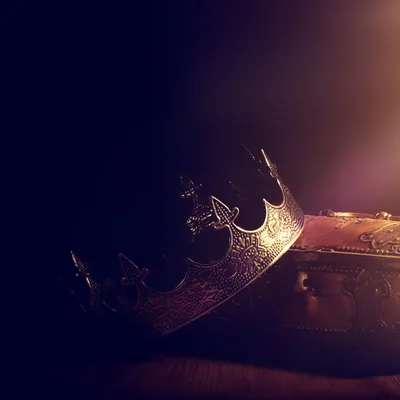Overview
Iuz, old Iuz of fear-babe talk, may be human - or may once have been human, but this is not known for certain one way or another. He has ruled the lands from the Howling Hills south to the Lake of Whyestil for ages longer than any man can live. From his throne in the wretched gloom of Dorakaa, the Lord of Pain stretches his hand across the Flanaess. His empire of tyranny and suffering is secure — none of the lands of good and hope are strong enough to threaten him. Iuz surveys his domain and cackles gleefully. He has added much to his holdings, but he is not yet content.
Rise of the Old One
In the era of the Viceroyalty of Ferrond, the northlands between the Opicm River and the Fellreev Forest, as far north as Blackmoor and as far west as Perrenland, were known as the Northern Reaches. This collection of petty baronies was under nominal vassalage to the viceroy in Dyvers. Though imperial records depict the north as a peaceful land spotted with the holdings of benign lords, historical evidence suggests that the region was a lawless, bandit-ridden refuge for amoral nobles wishing to escape the gaze of Rauxes and Dyvers without ceding their claim to aristocracy. By 479 CY, the presence of Furyondy in the north was negligible; a pity, since in that year a petty noble left his fief and all his holdings to a son of dubious origin—Iuz, a fiendish man whispered to possess demon-tinged blood.
Within the year, uncertain whispers changed to screams of terror. Whoever, or rather whatever, Iuz was, he was certainly no ordinary man; his cruelty and capacity for inflicting suffering seemingly knew no bounds. Before news of his villainy had spread to the south, Iuz controlled the three fiefs neighboring his original holding, and exhibited no signs of a waning political ambition. Furyondy’s King Avras and his northern margraves entreated their kinsmen from the south for aid, but fell upon bitter internal political squabbling. Meanwhile, Iuz conquered the westernmost Bandit Kingdoms, declaring the walled city of Molag his “Summer Capital.” By 500 CY, it appeared as though the unchecked might of Iuz would threaten the whole of the Flanaess. States as far south as the Principality of Ulek drew up contingency plans in case Furyondy fell.
Empire of Iuz — Iuz's Ascension to Godhood
Then, in 505 CY, Iuz vanished, leaving no signs of his whereabouts. His generals and advisers, untrustworthy and despicable to a man, soon set to warring, attempting to carve out a bit of land for themselves once it became certain that their powerful master would not return (something made uncertain on a semiregular basis, as several “false Iuzs” appeared in this period, most often ambitious illusionists or minor fiends with delusions of grandeur). Even as the realm was carved up, however, Iuz’s legend grew. The orcs of the northlands, who had known Iuz for generations of their short lives and had named him the Old One, worshiped him as a god, claiming that his strange disappearance was naught but an ascension to the afterlife. Soon, loyal and opportunistic humans joined the ever-growing Cult of Iuz, a movement aided by the fact that the Old One’s clerics found themselves imbued with powerful magical ability.
The landholders of the south, however, calculating generals and unholy men at the vanguard of the push against Furyondy, looked upon the growing Cult of Iuz with ill ease. They already had dedicated themselves to fell powers of the lower planes. In 513 CY, they officially broke from the realm of Iuz, taking Molag as their capital and fortifying land as far north as the headwaters of the Opicm River. The southern lords called themselves the Horned Society, assumedly in tribute to their various infernal masters.
The next half-century saw a great deal of consolidation of power in the north. Iuz’s priesthood eliminated all significant enemies in the capital, Dorakaa, and exterminated most “independent” lords throughout the land. An uneasy peace was established with the Hierarchs of the Horned Society, as sporadic skirmishing with the hated elves of the Vesve Forest and against the uncivilized nomads of the northwestern plains continued. In 570 CY, Iuz returned, taking residence in Dorakaa, his followers believing, as a god made flesh. Thousands of those who had been “unfaithful” (and hundreds more, for good measure) were murdered upon his order as a sign of his displeasure with the changes made in his absence. Their remains formed the basis for the Road of Skulls, a grisly thoroughfare from the capital to the Howling Hills.
/src/campaigns/278979/9d6d6e4e-c379-4904-a78c-971004b36774.webp)
